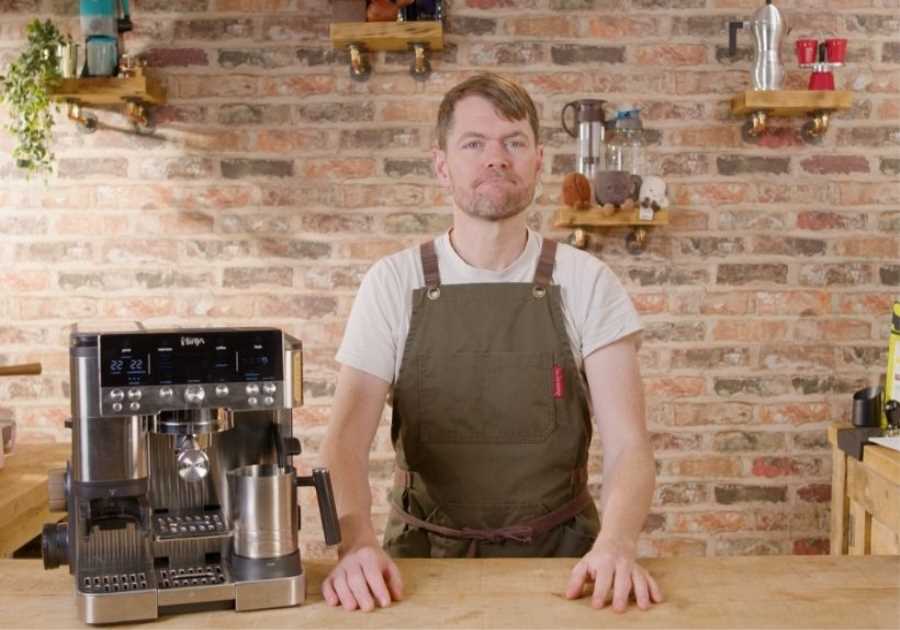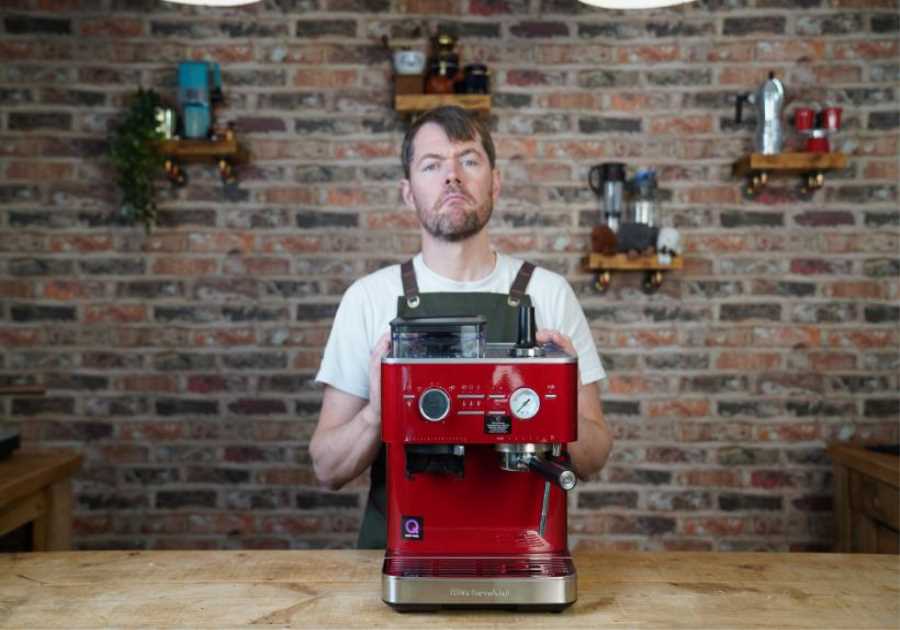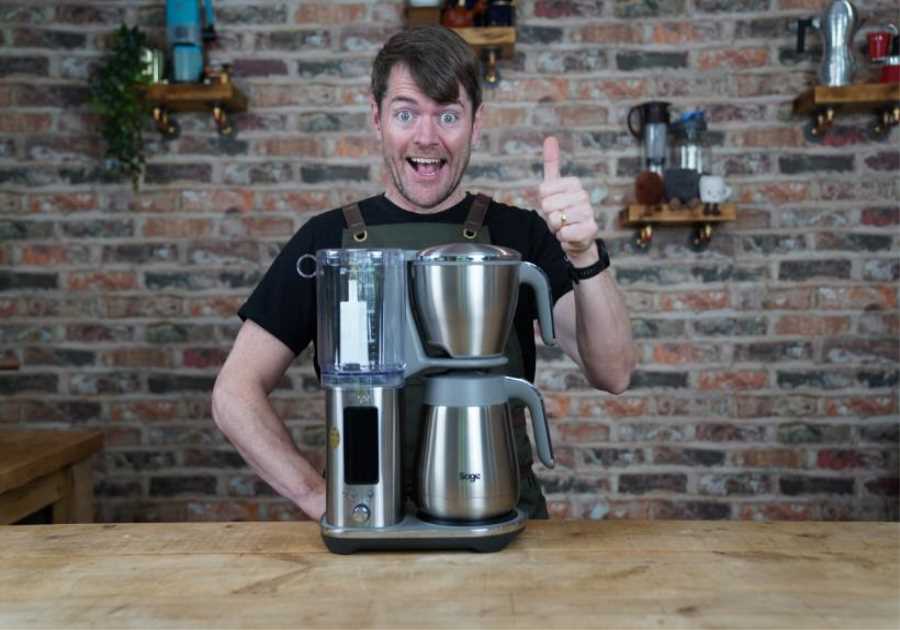For many specialty coffee professionals and enthusiasts, the pursuit of extracting the “perfect” espresso is about much more than dose, yield, brew time, and flow rate. As the industry has evolved in recent years, so has our understanding of how variables like temperature, grind size, and pressure impact espresso extraction.
Take extract (or compound) chilling, for example. When 2021 World Barista Championship finalist Hugh Kelly extracted his espresso over frozen metal cubes during his routine, it created buzz around how rapidly chilling espresso can preserve certain (and more desirable) sensory characteristics. Similarly, we also saw World Barista Champion Boram Um and finalist Isaiah Sheese use the Nucleus Paragon Espresso tool (a titanium-coated stainless steel sphere with a liquid core containing glycerin and water) in their 2023 routines.
While the use of these tools is certainly exciting, the general concept is not entirely new. Years prior at the World Barista Championship, 2016 Champion Berg Wu used a similar technique when he poured ice cold water over the basket and spouts of the portafilters before extracting his espresso.
Clearly, the quest to pull the best espresso isn’t stopping, but only continuing to advance.
To find out more, I spoke to Berg Wu, who is also a co-founder of Simple Kaffa, and Chahan Yeretzian, Professor of Chemistry and the Head of the Coffee Excellence Center at the Zurich University of Applied Sciences.
You may also like our article on extracting chilling.
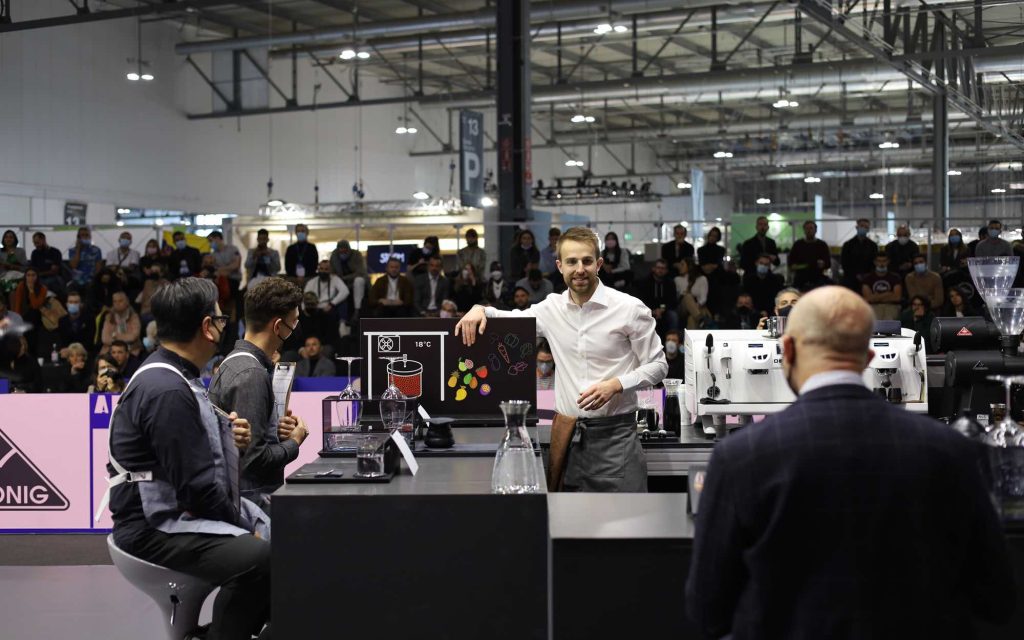
Why chill or cool espresso?
The Specialty Coffee Association recommends brewing espresso between 90°C and 96°C (194°F and 205°F). And while this temperature range plays a key role in extracting volatile compounds – and thereby more flavours and aromas – certain compounds are more sensitive to temperature than others.
As a way of preserving flavour and aroma as much as possible, a growing number of baristas and competitors have started using techniques similar to flash brewing, but for espresso.
Berg Wu was one of the first people to do so. At the 2014 World Barista Championship (where he placed seventh in the semi finals), he immersed his portafilters in an ice bath as a way to enhance the mouthfeel of his medium-dark roast coffee.
“A cooler portafilter enhances the texture of the coffee, giving it a smoother mouthfeel,” he explains.
He tells me, however, that it was not until his 2016 WBC routine that the practice of chilling and freezing portafilters became popular. Berg says his decision to pour ice water over his portafilters helped to enhance the citrus and floral aromas in his winning coffee.
He adds that this is because portafilters are usually around 90°C – a temperature at which aromas can dissipate quickly. By pouring ice cold water on the portafilter baskets and spouts, Berg says that the espresso doesn’t reheat after it passes through.
Introducing the concept of extract chilling
Following a 2017 WBC rule change, competitors could extract espresso anywhere between 90.5°C and 96°C (195°F and 205°F). This led Chahan and his team at ZHAW to research how temperature impacts the extraction of volatile compounds at 90°C, 93°C, and 96°C, specifically.
“The concept of ‘extract chilling’ did not exist before 2021,” he says. “It was discovered at the Coffee Excellence Center at ZHAW. We realised that the intensification of a coffee’s sensory profile when extracting with colder water (90°C) compared to water at 96°C is because you can retain more volatile compounds.
“I remembered watching Berg’s performance at World of Coffee in Dublin in 2016,” he adds. “I then formulated the scientific hypothesis that the heightened intensity in the cup when extracting with colder water is a post-extraction phenomena. That is when I started discussing this work with Sasa Sestic and his team at ONA Coffee, particularly Hugh Kelly. They also tried cooling the portafilter and reported that it had a significant impact in the final cup.”
Post-extraction chilling
The ZHAW team then shifted their focus onto post-extraction chilling. In collaboration with ONA Coffee, ZHAW designed a cooling “rock” to place on top of a cup to quickly chill the espresso as it extracts.
“Cooling the portafilter is complicated, so Hugh used a cooled ice-rock below the spout, which then became the Paragon Espresso tool,” Chahan explains. “We then carried out a range of analytical experiments on espresso, and observed that more volatiles were present when cooling the espresso post extraction. Sasa initially called this phenomenon ‘compound chilling’, but I proposed we change it to ‘extract chilling’.
“So in early 2021, we created and scientifically explained the term ‘extract chilling’,” he adds. “That is also when Hugh decided to introduce this concept into his WBC routine for World of Coffee Milan.”
From previous experiments, the researchers knew the concentration of volatile compounds is at the highest level in the first 5ml to 10 ml of extracted espresso. In turn, they decided to cool the first 10ml of liquid so as to not reduce the temperature of the espresso too much.
With each coffee – including Gesha and carbonic macerated lots – the ZHAW team and Hugh found that more volatile compounds were preserved when using the extract chilling method.
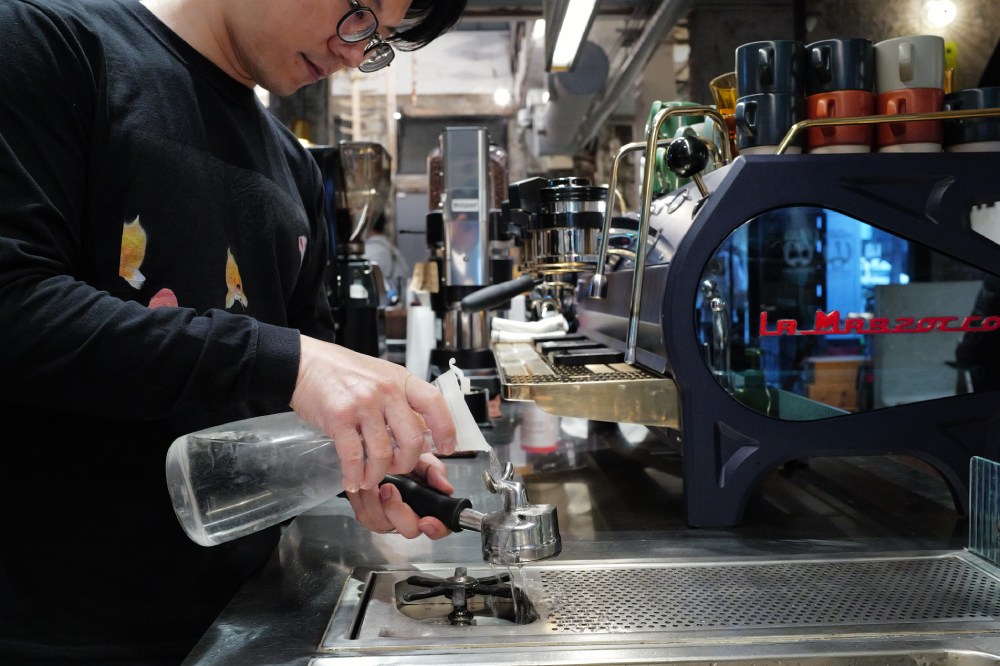
What are the best ways to rapidly chill espresso?
For many coffee shop owners, baristas, and home brewers, the concept of freezing portafilters or extract chilling is rather complex. But for those interested in trying it, is there a “best” way to rapidly cool espresso?
Ultimately, the answer is no, but different methods will yield slightly different results.
“It’s not necessarily about using specific tools,” Berg says. “As long as you chill the portafilter to the degree that you want, you can achieve your desired results.”
He explains that you can also use a naked portafilter to avoid reheating espresso as it passes through the bottom of a spouted portafilter. Additionally, Berg adds that most aromatic compounds can be preserved at room temperature, which means that your portafilters don’t necessarily need to be ice cold to preserve more flavour.
Most important, however, is the end beverage temperature – especially if you serve it in a coffee shop. Cooler temperatures can certainly allow customers to enjoy their coffee more – and potentially experience the full spectrum of flavours and aromas – but there is also the risk of reducing the temperature too much.
Chahan says that lowering the temperature of a drink by a few degrees is acceptable, and mentions that using the Paragon Espresso tool results in a drop of around 3°C to 4°C.
Using cold espresso cups may help, too.
“I would now question the practice of heating up espresso cups,” Chahan says. “You don’t want to heat the cup too much, because you will accentuate the loss of volatile compounds, but these are claims that we still need to validate.”
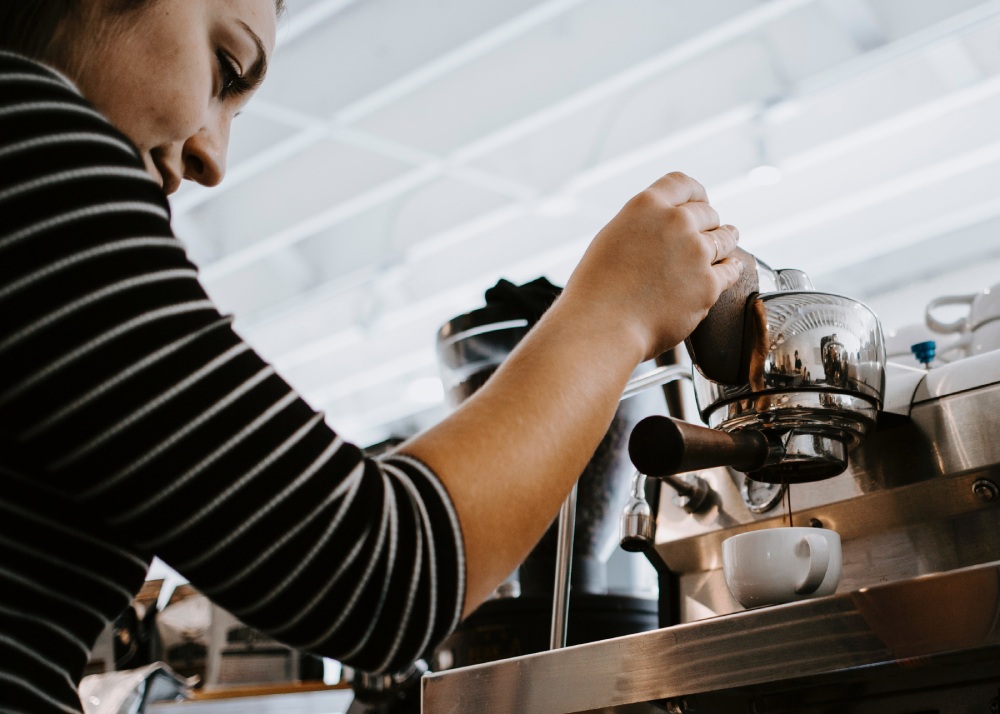
Practical implications for coffee shops
Although the practice is largely seen at competitions, Chahan believes that coffee shops could benefit from extract chilling or freezing portafilters.
“You’re able to capture the highest-quality of a coffee,” he says.
However, many customers – who don’t have the same level of sensory training as industry professionals – may not be able to perceive the difference to the same extent, or even at all.
Additionally, there could also be some logistical hurdles. Coffee shop owners and baristas need to consider how the practice affects space, efficiency, and workflow, as well as what type of equipment is necessary – including ice baths or chilling stones (which would need to be re-cooled and replaced after every few shots). In turn, this would also require more training to make sure baristas are carrying out the practice correctly.
Reserving rapid cooling for certain coffees?
Both Berg and Chahan agree that extract chilling and freezing portafilters shouldn’t be used for all kinds of coffee. For instance, Berg says the practice usually works better with more delicate and aromatic coffees, such as light roasts, washed coffees, and varieties like Gesha.
“With natural processed coffee, or even medium and dark roast profiles, these coffees usually already have a more pronounced aroma,” he adds. “But if you want to enhance the texture of the espresso – whether it’s a light or dark roast, and no matter what kind of processing method – chilling the portafilter can improve the mouthfeel.”
Chahan, meanwhile, says extract chilling often doesn’t complement more fermented and funky coffees to avoid increasing the extraction of undesirable volatile aromas.
“It requires a certain level of expertise to know how to best use extract chilling,” he tells me.
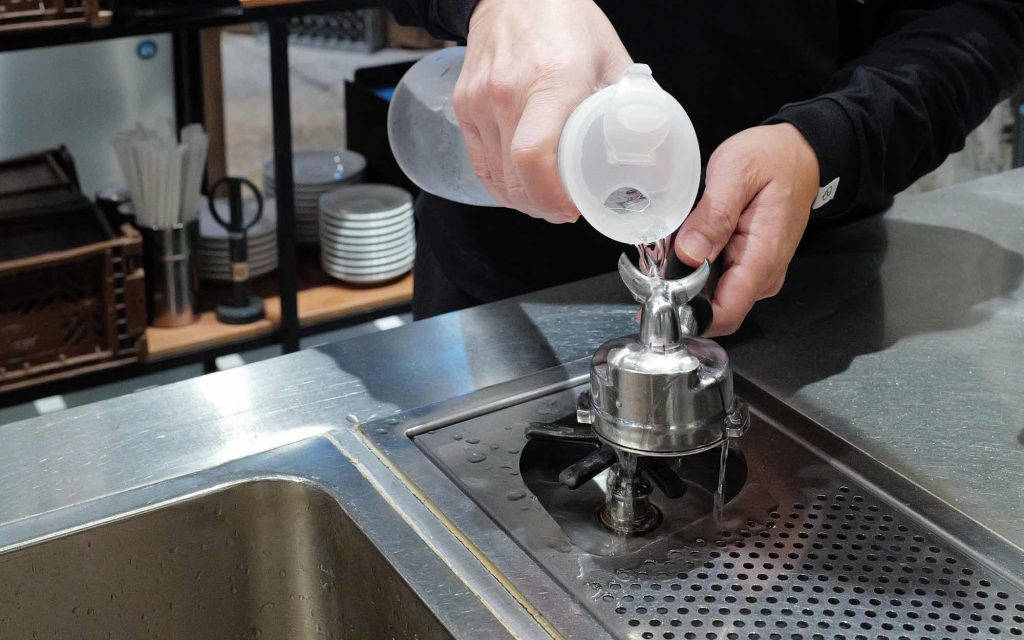
The pursuit of perfect espresso certainly continues in specialty coffee, and freezing portafilters and extract chilling are huge milestones in this journey. These techniques are not applicable to every coffee, but they help to push the boundaries of espresso extraction and coffee flavour even further.
“The devil is always in the details, and these little details often make a big difference,” Berg concludes.
Enjoyed this? Then read our article on cold-pressed espresso.
Editor’s note: Berg Wu’s quotes were translated into English with the assistance of his wife Chee Lu.
Photo credits: Chee Lu, Specialty Coffee Association, World Coffee Events
Perfect Daily Grind
Want to read more articles like this? Sign up for our newsletter!
The post From freezing portafilters to extract chilling: Why the push for perfect espresso will never stop appeared first on Perfect Daily Grind.
By: Melina DevoneyTitle: From freezing portafilters to extract chilling: Why the push for perfect espresso will never stop
Sourced From: perfectdailygrind.com/2024/01/search-for-perfect-espresso-portafilter/
Published Date: Tue, 16 Jan 2024 06:32:00 +0000

